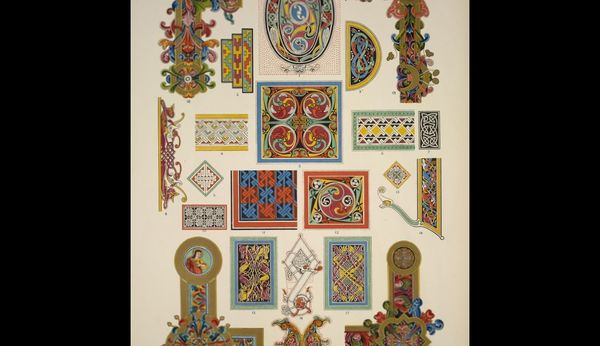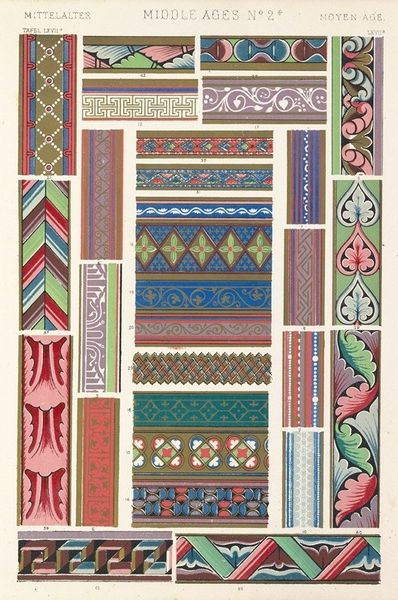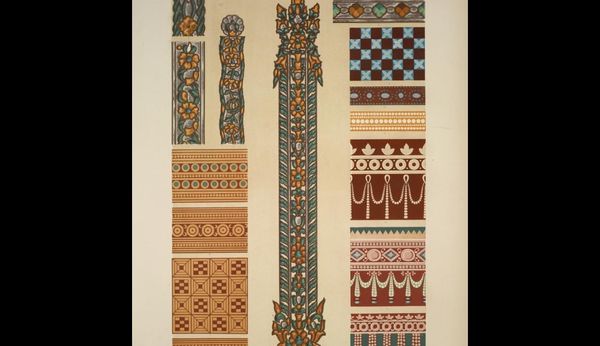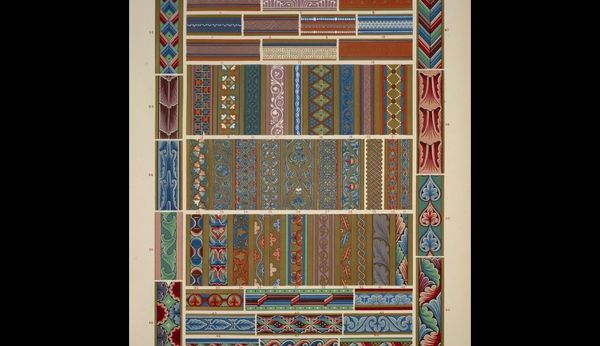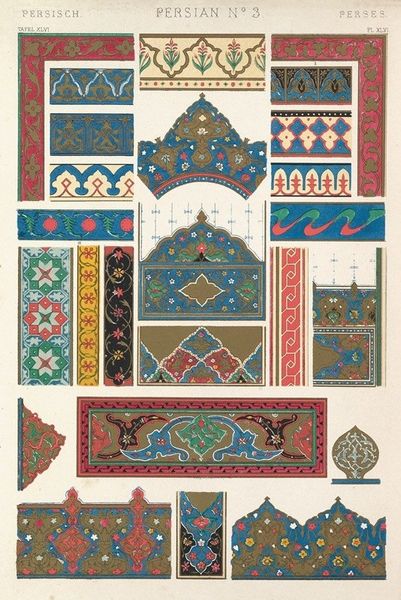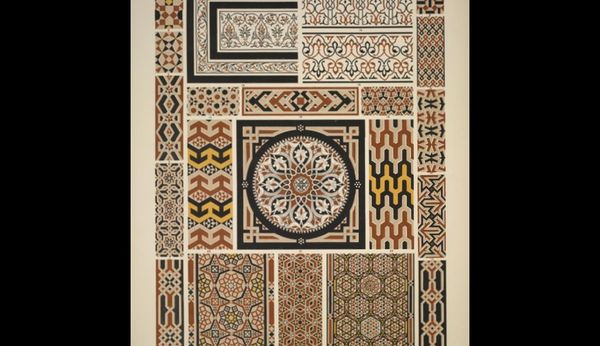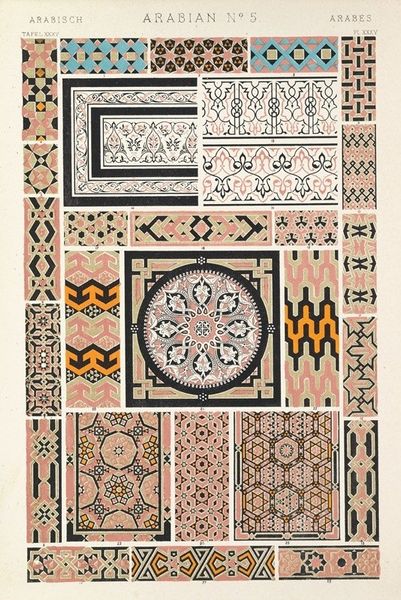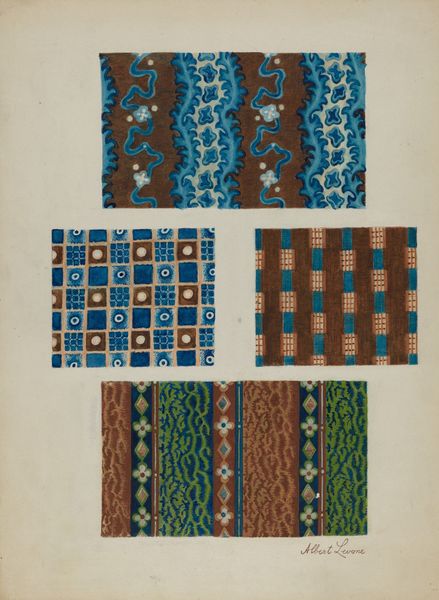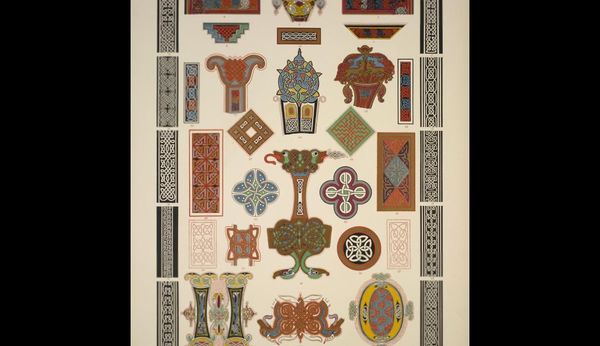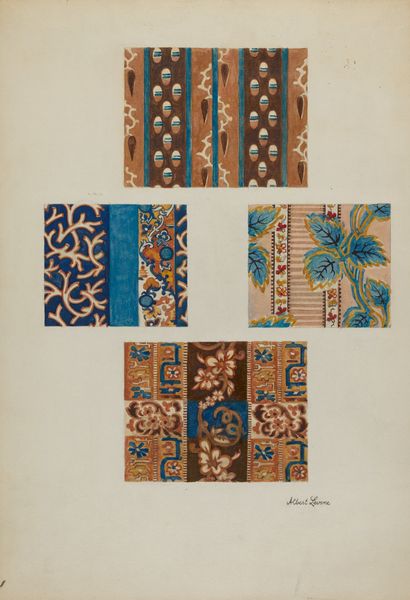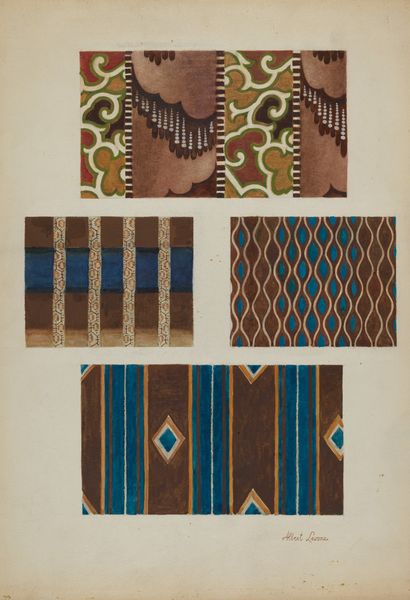
drawing, mixed-media, print
#
drawing
#
natural stone pattern
#
mixed-media
# print
#
pattern
#
geometric composition
#
geometric pattern
#
traditional architecture
#
tile art
#
geometric
#
orientalism
#
repetition of pattern
#
vertical pattern
#
tiled
#
pattern repetition
#
islamic-art
#
decorative-art
#
layered pattern
Copyright: Public domain
Curator: This mixed-media print and drawing is called "Nineveh and Persia, no. 1" by Owen Jones. Editor: Oh, my, a feast for the eyes! I'm immediately drawn to the geometric arrangement and chromatic scale of yellows, blues, reds, and browns, an exploration of seriality and plane in just one sheet of decorative patterns. Curator: Owen Jones, a key figure in the 19th-century design reform movement, was deeply influenced by his studies of Islamic art and architecture, particularly from regions like Nineveh and Persia. The drawing underscores how Jones sought to uncover the underlying geometric principles common across cultures, challenging Eurocentric perspectives of art history and design. Editor: It's fascinating how these designs seem both ancient and incredibly modern at once. Each individual pattern employs radial symmetries—circles and polygons create elaborate mandalas—echoing forms that reappear across many decorative traditions and the history of ornament itself. Curator: Yes, Jones's work reveals an Orientalist aesthetic that simultaneously romanticizes the "East" while also appropriating and commodifying its artistic traditions for Western consumption. We must ask what it means to classify something like this as "Islamic art," for instance, and unpack how power relations can be embedded within even the most visually appealing designs. Editor: Setting aside the contextual implications, what are your impressions about the layering, repeating geometry, the balance of the positive and negative space? Semiotically, we should investigate, how the individual symbols of these patterns build complex signifying systems, reflecting the artistic intention and structural unity. Curator: I see his patterns reflecting colonial dynamics, shaping ideas about the cultural and aesthetic value of non-Western societies. Editor: And for me, this print exemplifies the possibilities of applying geometry to formal structure and the potential beauty in patterns that recur both in the fine arts and crafts. Curator: Ultimately, reflecting on how such imagery, once confined to design manuals, can challenge how we approach design today, reminds us that there's no simple answer when trying to approach patterns produced by way of colonialism. Editor: Precisely, from the details of the image, from his line and design style, all come together as components that, assembled into a cohesive unity, are now made available to those eager for aesthetic insight.
Comments
No comments
Be the first to comment and join the conversation on the ultimate creative platform.
